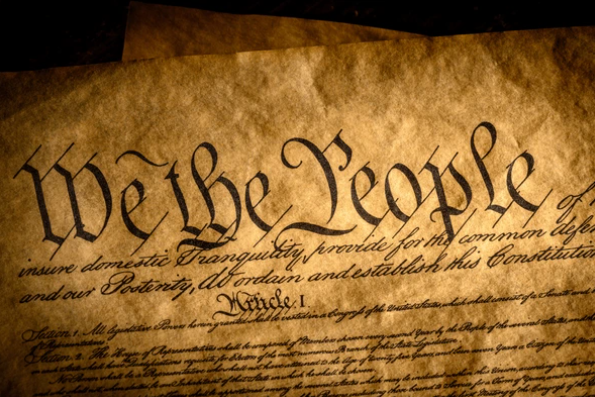Introduction: The Preamble to the Constitution
The Preamble to the Constitution of the United States, drafted in 1787, serves as an introduction to the nation’s foundational document. It outlines the purposes and guiding principles of the Constitution, reflecting the aspirations of the Founding Fathers for the new republic. Understanding the context, content, and implications of the Preamble is crucial for comprehending the broader framework of American democracy.
The Preamble is not merely a ceremonial introduction; it encapsulates the essence of the American experiment in self-government. It provides insight into the philosophical foundations of the Constitution and sets the stage for the articles and amendments that follow. The significance of the Preamble extends beyond its words, embodying the core values and objectives that have shaped the United States since its inception.
The words of the Preamble—”We the People of the United States, in Order to form a more perfect Union, establish Justice, insure domestic Tranquility, provide for the common defence, promote the general Welfare, and secure the Blessings of Liberty to ourselves and our Posterity, do ordain and establish this Constitution for the United States of America”—resonate through American history and politics. They encapsulate the vision of a nation committed to democracy, justice, peace, defense, welfare, and liberty.
Read Also : The Prohibition Era (1920-1933): A Defining Period in American History
The Historical Context: America in 1787
To fully appreciate the Preamble, it’s essential to understand the historical context in which it was written. The late 18th century was a period of profound transformation and upheaval in America. The newly independent states were grappling with the challenges of creating a unified nation while maintaining individual liberties and state sovereignty.
The Articles of Confederation: A Precursor to the Constitution
Before the Constitution, the United States was governed by the Articles of Confederation. Adopted in 1781, the Articles established a confederation of sovereign states with a weak central government. This arrangement proved to be ineffective, as the national government lacked the authority to levy taxes, regulate commerce, or enforce laws. The resulting economic turmoil and political instability highlighted the need for a stronger federal government.
The shortcomings of the Articles of Confederation became apparent during events such as Shays’ Rebellion, where economic distress and lack of a strong national response underscored the need for a more robust federal system. These issues fueled the urgency for change and set the stage for the Constitutional Convention. The inadequacies of the Articles prompted leaders to reconsider the structure of the government and seek solutions that would create a more stable and effective union.
Efforts to amend the Articles were unsuccessful, leading to a consensus that a new framework was necessary. This realization brought together some of the most prominent and influential figures in American politics at the time, all dedicated to creating a stronger and more cohesive national government. Their shared goal was to establish a system that could address the challenges facing the fledgling nation and ensure its survival and prosperity.
The Constitutional Convention: Crafting a New Framework
The Constitutional Convention was a seminal event in American history. Fifty-five delegates from twelve states (Rhode Island did not participate) convened in Philadelphia to discuss and draft a new constitution. Prominent figures such as George Washington, James Madison, Alexander Hamilton, and Benjamin Franklin played crucial roles in the deliberations.
The debates at the convention were intense and complex, as delegates grappled with fundamental questions about the nature of government, the balance of power, and the protection of individual rights. The resulting Constitution represented a series of compromises, balancing the interests of large and small states, northern and southern states, and federal and state authorities. These compromises were essential to gaining the support necessary for ratification and reflected the diverse interests and priorities of the states.
The framers aimed to create a government that was strong enough to address national issues while safeguarding individual liberties and state sovereignty. The innovative structure of the Constitution, with its separation of powers, checks and balances, and federal system, was designed to achieve these goals. The delegates’ ability to reach consensus on such a groundbreaking document is a testament to their commitment to the principles of democracy and governance.
The Ratification Debate: Securing Approval
After the Constitution was drafted, it had to be ratified by the states. This process sparked intense debate and discussion across the country. Supporters of the Constitution, known as Federalists, argued that a stronger national government was essential for the nation’s survival and prosperity. Opponents, known as Anti-Federalists, feared that the new government would be too powerful and threaten individual liberties and state rights.
The ratification debate was marked by the publication of numerous essays, pamphlets, and speeches. The Federalist Papers, written by Alexander Hamilton, James Madison, and John Jay, were particularly influential in advocating for the Constitution’s adoption. These essays provided detailed explanations of the Constitution’s provisions and arguments for its necessity, helping to sway public opinion in favor of ratification.
Ultimately, the Constitution was ratified by the required nine states in 1788, and it became the supreme law of the land. The promise of adding a Bill of Rights, which would explicitly protect individual liberties, helped to secure the necessary support from key states. The first ten amendments to the Constitution, known as the Bill of Rights, were adopted in 1791, addressing many of the concerns raised by the Anti-Federalists and solidifying the new government’s legitimacy.
Analyzing the Text: Understanding the Preamble’s Purpose
The Preamble to the Constitution serves as an introduction and sets forth the foundational principles and purposes of the document. Its concise language encapsulates the core objectives that the framers sought to achieve in establishing a new government.
“We the People”: The Foundation of Popular Sovereignty
The Preamble begins with the powerful phrase “We the People,” which emphasizes the principle of popular sovereignty. This phrase signifies that the authority of the government is derived from the people themselves, rather than from a monarch or a distant ruling elite. It reflects the democratic ideals that underpin the Constitution and the belief that the government should be accountable to the citizens it serves.
The choice of these words was deliberate and revolutionary, asserting that the Constitution was created by and for the people of the United States. This concept of popular sovereignty was a radical departure from the traditional notions of governance that had dominated Europe for centuries, where authority was often vested in hereditary monarchies or aristocratic elites.
By declaring “We the People” as the source of governmental power, the framers sought to ensure that the government would be responsive to the will of the people and protect their rights and interests. This foundational principle continues to guide American democracy and remains a cornerstone of the nation’s political philosophy.
“To Form a More Perfect Union”: Unity and Cooperation
The phrase “to form a more perfect Union” acknowledges the need for greater unity and cooperation among the states. Under the Articles of Confederation, the states operated as loosely connected entities with significant autonomy, often leading to conflicts and inefficiencies. The framers of the Constitution sought to create a stronger, more cohesive national government that could effectively address collective challenges and promote the common good.
This goal of forming a “more perfect Union” reflects the desire to improve upon the existing system and create a nation that could stand united in the face of internal and external challenges. It underscores the importance of federalism, where the national and state governments share power and responsibilities, working together to achieve common objectives.
The concept of a more perfect Union also highlights the dynamic and evolving nature of the American experiment. The framers recognized that the Constitution would need to adapt to changing circumstances and challenges, and they built in mechanisms for amendment and reform to ensure that the Union could continue to grow and improve over time.
“Establish Justice”: The Pursuit of Fairness and Equality
The Preamble’s call to “establish Justice” reflects the framers’ commitment to creating a system of government that upholds the rule of law and ensures fairness and equality for all citizens. Justice is a fundamental principle of any democratic society, and the framers sought to establish a legal framework that would protect individual rights and provide mechanisms for resolving disputes.
Establishing justice involves creating laws and institutions that are fair, impartial, and accessible to all citizens. It requires a commitment to protecting the rights of individuals, ensuring due process, and providing equal protection under the law. The framers understood that justice is essential for maintaining social order, protecting individual liberties, and fostering trust in government institutions.
The commitment to justice is evident throughout the Constitution, including the establishment of an independent judiciary, the guarantee of trial by jury, and the protection of individual rights through the Bill of Rights. These provisions reflect the framers’ belief that justice is a cornerstone of a stable and prosperous society and that it must be vigorously defended and upheld.
The Preamble’s Influence: Shaping American Governance
The Preamble has had a lasting impact on American governance, providing a guiding framework for interpreting the Constitution and shaping the nation’s political philosophy. Its influence can be seen in various aspects of American law, politics, and society.
“Insure Domestic Tranquility”: Maintaining Peace and Order
The Preamble’s goal to “insure domestic Tranquility” highlights the importance of maintaining peace and order within the country. The framers recognized that a stable and orderly society is essential for the well-being of its citizens and the effective functioning of government. Ensuring domestic tranquility involves creating laws and institutions that prevent and resolve conflicts, protect public safety, and promote social cohesion.
The framers’ commitment to domestic tranquility is reflected in various constitutional provisions, including the establishment of a strong executive branch with the authority to enforce laws and maintain order. It also includes the creation of mechanisms for resolving disputes, such as the federal court system and the guarantee of habeas corpus, which protects individuals from arbitrary detention.
Domestic tranquility remains a central concern of American governance, as policymakers and law enforcement agencies work to address issues such as crime, civil unrest, and public safety. The commitment to maintaining peace and order is essential for ensuring that citizens can live and work in a secure and stable environment.
“Provide for the Common Defence”: National Security
The Preamble emphasizes the need to “provide for the common defence,” reflecting the framers’ recognition of the importance of national security. Protecting the nation from external threats was a primary concern, especially in the volatile geopolitical landscape of the late 18th century. The Constitution establishes a framework for a unified national defense, with the federal government responsible for raising and maintaining armed forces and coordinating defense efforts.
The framers understood that a strong national defense was essential for safeguarding the nation’s sovereignty and protecting its citizens from foreign aggression. The Constitution grants Congress the authority to declare war, raise and support armies, and maintain a navy, while the President serves as the Commander in Chief of the armed forces. This division of powers ensures that decisions regarding national defense are made with careful consideration and broad support.
Providing for the common defense continues to be a central priority for the United States, as policymakers and military leaders work to address evolving security challenges. The commitment to national security encompasses not only traditional military threats but also emerging issues such as cybersecurity, terrorism, and global stability.
“Promote the General Welfare”: Enhancing the Well-being of Citizens
The Preamble’s call to “promote the general Welfare” underscores the framers’ commitment to enhancing the well-being of all citizens. This principle reflects the belief that government has a responsibility to create conditions that allow individuals and communities to thrive. Promoting the general welfare involves enacting policies and programs that address social, economic, and public health needs.
The Constitution provides a framework for promoting the general welfare through various means, including the regulation of commerce, the provision of public services, and the protection of individual rights. The federal government has the authority to enact laws and allocate resources to address issues such as education, healthcare, infrastructure, and economic stability.
Promoting the general welfare remains a central goal of American governance, as policymakers work to address the diverse needs and challenges facing the nation. This commitment to enhancing the well-being of citizens reflects the framers’ vision of a government that serves the common good and supports the pursuit of happiness for all.
The Legacy of the Preamble: Enduring Principles and Challenges
The Preamble to the Constitution has left a lasting legacy, shaping the principles and values that underpin American democracy. Its influence can be seen in the ongoing efforts to interpret and apply the Constitution in a way that reflects the framers’ vision and addresses contemporary challenges.
“Secure the Blessings of Liberty”: Protecting Individual Freedoms
The Preamble’s commitment to “secure the Blessings of Liberty to ourselves and our Posterity” reflects the framers’ dedication to protecting individual freedoms and ensuring that future generations enjoy the benefits of liberty. The Constitution enshrines various rights and protections that safeguard individual liberties, including freedom of speech, religion, and assembly, as well as the right to due process and equal protection under the law.
Securing the blessings of liberty involves not only protecting individual rights but also ensuring that government actions do not infringe upon these freedoms. The Constitution establishes a system of checks and balances to prevent the abuse of power and to ensure that government remains accountable to the people. This commitment to liberty is a foundational principle of American democracy and continues to guide the nation’s legal and political framework.
The ongoing struggle to secure the blessings of liberty is evident in contemporary debates over issues such as privacy, civil rights, and government surveillance. As society evolves and new challenges emerge, the principles enshrined in the Preamble provide a touchstone for protecting and expanding individual freedoms.
“To Ourselves and Our Posterity”: A Commitment to Future Generations
The Preamble’s reference to “ourselves and our Posterity” emphasizes the framers’ commitment to future generations. This principle reflects the belief that the Constitution should not only address the needs of the present but also provide a framework for future prosperity and stability. The framers sought to create a government that would endure and adapt to changing circumstances, ensuring that the benefits of liberty and justice would be preserved for future Americans.
This commitment to posterity involves making decisions that consider the long-term impact on society and the environment. It requires a focus on sustainability, equity, and innovation to ensure that future generations inherit a nation that is strong, just, and prosperous. The principles enshrined in the Preamble serve as a guiding light for policymakers as they address contemporary challenges and work to build a better future.
The emphasis on future generations is reflected in various aspects of American policy, from environmental protection to education and public health. By considering the needs and aspirations of posterity, the nation can continue to uphold the values and principles that have defined its democratic experiment.
Interpreting the Preamble: A Living Document
The Preamble to the Constitution is often cited in legal and political discourse as a guiding statement of principles and purposes. While it does not confer specific legal powers, it provides a framework for interpreting the Constitution and understanding the intentions of the framers. Courts and scholars often refer to the Preamble when considering constitutional issues, using its language to inform their interpretations of the document’s provisions.
The enduring relevance of the Preamble lies in its articulation of fundamental principles that continue to resonate in American society. It serves as a reminder of the core values that underpin the nation’s governance and provides a foundation for addressing contemporary challenges. As a living document, the Constitution and its Preamble remain central to the ongoing effort to build a more just, equitable, and prosperous society.
The Preamble’s influence extends beyond the legal realm, shaping public discourse and civic education. It serves as a touchstone for Americans as they engage with their democratic institutions and work to uphold the values of justice, liberty, and the common good. The principles enshrined in the Preamble continue to inspire and guide the nation as it navigates the complexities of the 21st century.
Conclusion: The Preamble’s Enduring Impact on American Governance
The Preamble to the Constitution is a profound declaration of the principles and purposes that underpin the United States’ system of government. Written in 1787, this introductory statement captures the framers’ vision of a more perfect Union, committed to justice, peace, defense, welfare, and liberty. As an essential component of the Constitution, the Preamble offers a succinct summary of the document’s core objectives and serves as a guiding beacon for interpreting its provisions.
By examining the Preamble, we gain valuable insights into the intentions behind the Constitution’s creation. The framers sought to address the weaknesses of the Articles of Confederation and create a stronger, more unified federal government. Their goal was to establish a framework that would not only address contemporary challenges but also adapt to future needs, ensuring that the principles of democracy, justice, and liberty would endure.
The impact of the Preamble extends far beyond its historical context. It continues to shape American legal and political discourse, serving as a foundational reference point for interpreting the Constitution. The principles articulated in the Preamble—forming a more perfect Union, establishing justice, ensuring domestic tranquility, providing for the common defense, promoting the general welfare, and securing the blessings of liberty—remain central to the nation’s identity and governance.
In the face of evolving challenges, the Preamble’s values provide a steady guide for policymakers, citizens, and legal scholars alike. It reminds us of the enduring aspirations of the American people and the ongoing commitment to creating a just and equitable society. As we move forward, the Preamble’s vision for a united and prosperous nation continues to inspire and guide efforts to uphold the principles of democracy and liberty.
In summary, the Preamble to the Constitution is a timeless expression of the values and goals that have shaped American democracy. Its legacy endures through its influence on the Constitution’s interpretation and its role in guiding the nation’s pursuit of a more perfect Union. As we reflect on its significance, we reaffirm our dedication to the principles that define the United States and strive to ensure that the promises of the Preamble remain a reality for all generations.
FAQ About the Preamble to the Constitution
What is the Preamble to the Constitution?
The Preamble to the Constitution is the introductory statement to the United States Constitution. It outlines the fundamental purposes and guiding principles of the document.
Why is the Preamble important?
The Preamble is important because it encapsulates the core values and objectives of the Constitution, reflecting the framers’ vision for a just, stable, and prosperous nation. It serves as a guiding framework for interpreting the Constitution.
What are the key principles outlined in the Preamble?
The key principles outlined in the Preamble include forming a more perfect Union, establishing justice, ensuring domestic tranquility, providing for the common defense, promoting the general welfare, and securing the blessings of liberty for present and future generations.







2 comments